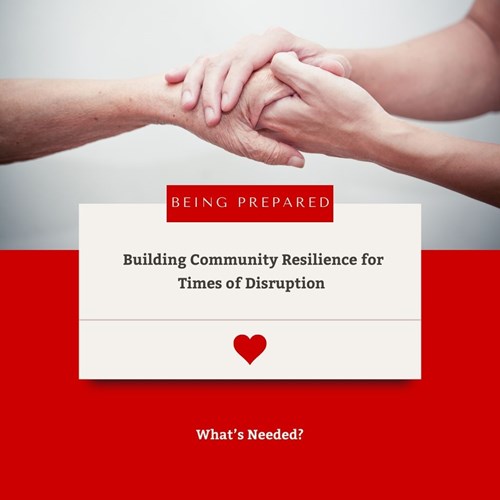
Building Community Resilience Locally
Garve and District Community Council
Added at 15:20 on 19 November 2025
What “Community Resilience” Means
Community resilience is about individuals and groups using their own skills, knowledge and resources to support themselves and each other during disruptive events. These can include severe weather, flooding, loss of power, transport disruption, or any incident that affects daily life.
This does not replace the work of the emergency services. Instead, it helps ensure communities can cope until help arrives and can recover more quickly afterwards.
The Building Blocks of a Resilient Community
A resilient community usually shows the following strengths:
Individuals and Households
- Understand the main risks in the area.
- Know simple steps to prepare—for example keeping household essentials, understanding how to stay safe in bad weather, or having essential contacts to hand.
- Feel confident helping neighbours safely.
- Children and young people learn about resilience through schools and family discussions.
Community and Voluntary Groups
- Know how they can help during an emergency.
- Work together on activities such as community emergency plans.
- Take part in training or exercises when appropriate.
- Help identify vulnerable people and community assets.
Local Businesses and Services
- Have business continuity plans (how they would keep operating during disruption).
- Support staff and customers during challenging circumstances.
- Contribute positively to the wider community’s recovery.
How Organisations Support Community Resilience
- Scottish Government – Sets national policy and tools.
- Regional Resilience Partnerships – Bring together emergency organisations across the North, East or West.
- Local Authorities – Lead community engagement, help with local planning, and support training.
- Voluntary Organisations – Provide vital practical support and community knowledge.
For members of the public, advice on preparing at home or in the community can be found at Ready.scot.
Communities are encouraged to:
Understand Local Risks
Emergencies happen, and most communities will experience disruption at some point. Knowing what risks are most likely—such as storms, flooding or power cuts—helps people prepare sensibly without alarm.
Identify Local Assets
Every community has strengths: local knowledge, people with useful skills, community halls, shops, vehicles, volunteer groups, and more. Understanding what already exists is the first step to planning.
Prioritise Which Communities Need Most Support
Local authorities and partners may focus first on:
- Areas recently affected by events such as flooding.
- Rural or isolated communities.
- Places with vulnerable residents.
- Communities already active and eager to start planning.
Develop Local Emergency Plans
Many Scottish communities now have their own community emergency plans. These describe:
- What risks the local area faces.
- What resources the community has.
- Who can help with communication or coordination during an
- incident.
- How to support neighbours, especially those who might be more vulnerable.
The strongest community resilience projects happen when communities and local responders “meet halfway”—both sides contributing information, support and local knowledge.
Why This Matters
Recent years have shown the importance of being able to rely on each other. When our community is prepared, we can:
- Respond faster when disruption occurs.
- Look after vulnerable neighbours.
- Support emergency services by reducing preventable pressures.
- Recover more quickly afterwards.
- Strengthen the sense of community year-round.
Where to Learn More
For practical advice on household preparedness, community planning, and local emergency actions, we were referred to the Ready Scotland website.
Unfortunately we found a plethora of broken links / outdated information on the web pages and to two of the guidance documents on the website.
This afternoon, 19th November 2025, we wrote to the email address provided on the Ready Scotland and advised as follow;-
"Our community and neighbouring communities are trying to make strides into becoming more resilient. We have been referred to the Ready Scotland website -https://www.ready.scot but many of the links are broken taking people to an old website https://www.readyscotland.org All corresponding links pertaining are now defunct;-here is an example from page 2 of the Building Resilient Communities document. https://www.readyscotland.org/my-community/
The same applies to the Guide to Emergency Planning document.
Both documents are attached; these were found at the Ready Scotland website. All pages found there need links checked and replaced as necessary as do both of these documents
In view of this and the fact the Scottish Government want communities to become more resilient, please fix all broken links replacing them with links to correct and current information. Having done so please let us know so that we may press on with our endeavours under correct guidance. "
CC Maree Todd MSP
CC Hannah Cameron-Ross EPO Highland Council